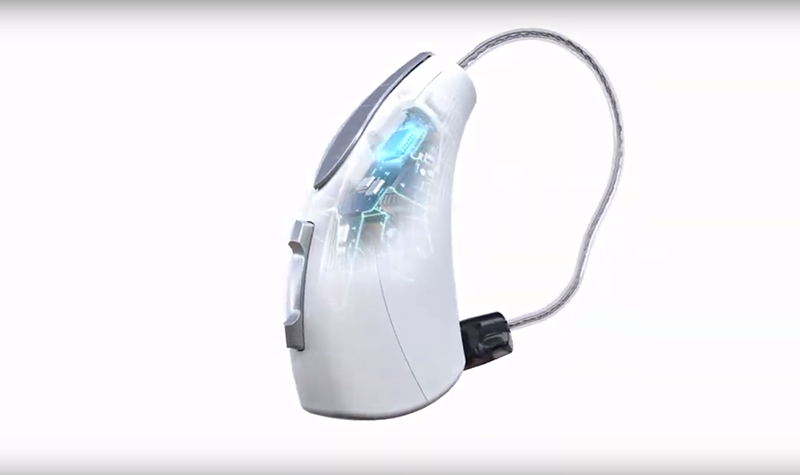Starkey Hearing Technologies unveiled Livio AI, an Artificial Intelligence-powered hearing aid that automatically translates foreign languages, and tracks both your physical and mental health at the CES 2019.
“We are particularly pleased this year to receive CES Innovation Award for accessibility, Dave Favry, Chief innovation officer at Starkey told MedGadget’s Michael Ostrovsky.
“We work with people with hearing loss and we’ve developed the first hearing aid that uses embedded sensors directly on the hearing aid, in combination with machine learning and artificial intelligence to enable the person to be able to track their physical activity and cognitive well-being from wearing their hearing aids on a day to day basis.”
Related CES 2019: ReSound Launches LiNX Quattro, the First AI Voice Control Smart Hearing Aid
The company is also incorporating directly in the hearing aid a heart rate sensor. This heart rate sensor will monitor heart rate and heart rate recovery. There’s a link between hearing loss and cardiovascular disease. “So, we really want to encourage people to live healthier lives, take full advantage of their hearing aid and tying it to other important health conditions,” Favry said.

With the new device, Starkey wants to prove that hearing aids aren’t just medical devices for older folks, but they can also be wearables for the tech-savvy young generation. Real-time translation can translate 27 languages from English to other languages or back the other way. This feature may attract even young folks without hearing loss. Another feature in this new device is the real-time transcription. If you want to use it in email or texts, you don’t have to leave the app. Aging individuals with dexterity issues can email or text by using voice-to-text within the app. There’s also a virtual digital assistant which can be activated by a simple tap on the device.
Related Eargo Launches Eargo Neo Invisible Hearing Aids at CES 2019
Another great feature is fall detection. Even a mild degree of hearing loss is accompanied by a three times elevated risk of fall. The user can identify up to three contacts who will be notified via texts if they suffer a fall.












